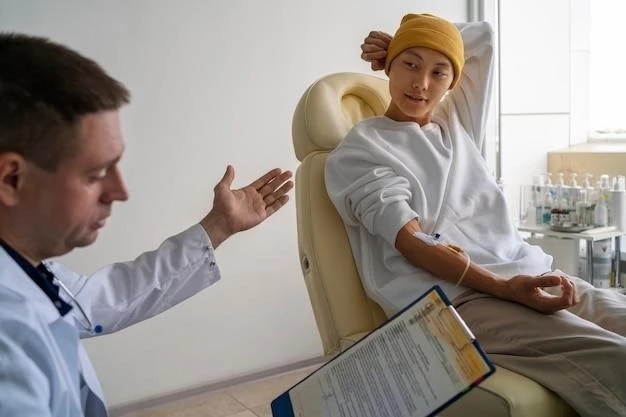Introduction to Antley–Bixler Syndrome
Antley-Bixler Syndrome is a rare genetic disorder characterized by multiple physical and developmental abnormalities․
Understanding the Rare Genetic Disorder
Antley-Bixler Syndrome is a complex genetic condition with variable expressivity and penetrance․ It is typically caused by mutations in genes associated with steroid synthesis and skeletal development․ The syndrome’s rarity presents challenges in diagnosis and treatment due to limited awareness and understanding in the medical community․
Patients with Antley-Bixler Syndrome may exhibit a range of symptoms affecting the craniofacial region, joints, and limbs․ Understanding the genetic underpinnings of the disorder is crucial for precision medicine approaches and tailored interventions․ Ongoing research aims to elucidate the intricate molecular pathways involved in Antley-Bixler Syndrome to improve diagnostic accuracy and therapeutic outcomes for affected individuals․
Causes of Antley–Bixler Syndrome
Antley-Bixler Syndrome is primarily caused by genetic mutations affecting steroid synthesis and skeletal development mechanisms․
Genetic Mutations Associated with the Syndrome
The genetic mutations linked to Antley-Bixler Syndrome involve genes such as FGFR2 and POR, which play crucial roles in skeletal development and steroid metabolism․ Alterations in these genes disrupt normal physiological processes, leading to the diverse symptoms observed in individuals with the syndrome․
Understanding the specific mutations and their effects on gene function is essential for accurate diagnosis and targeted treatment strategies․ Research continues to investigate the intricate genetic pathways underlying Antley-Bixler Syndrome to enhance genetic counseling, newborn screening, and therapeutic interventions for affected individuals and families․
Symptoms of Antley–Bixler Syndrome
Antley-Bixler Syndrome manifests through a spectrum of physical and developmental abnormalities affecting the craniofacial regions, joints, and limbs․
Physical and Developmental Characteristics
Individuals with Antley-Bixler Syndrome may present with craniofacial anomalies, such as midface hypoplasia and proptosis, along with joint contractures, bowed long bones, and syndactyly․ Developmental delays and intellectual disabilities are common, underscoring the multisystemic nature of the disorder․
The physical manifestations can vary widely in severity among affected individuals, necessitating a comprehensive evaluation by a multidisciplinary team to address the diverse needs associated with Antley-Bixler Syndrome․ Early intervention and ongoing support are essential for optimizing outcomes and enhancing the quality of life for individuals living with this rare genetic disorder․
Diagnosis and Treatment of Antley–Bixler Syndrome
Diagnosing Antley-Bixler Syndrome involves comprehensive genetic testing and multidisciplinary management focused on addressing individual symptoms․
Diagnostic Procedures and Approaches
Diagnosing Antley-Bixler Syndrome typically involves genetic testing to identify mutations in genes like FGFR2 and POR․ Additionally, a thorough clinical evaluation, imaging studies, and consultation with geneticists and other specialists help form a comprehensive diagnostic strategy․
Considering the wide range of symptoms associated with Antley-Bixler Syndrome, a multidisciplinary approach is crucial for accurate diagnosis and tailored treatment planning․ Early identification through newborn screening or genetic testing can facilitate timely interventions and support for affected individuals and their families․
Management and Treatment Options
The management of Antley-Bixler Syndrome focuses on addressing individual symptoms through a combination of surgical interventions, physical therapy, orthopedic support, and developmental therapies․ Treatment strategies aim to improve quality of life, functionality, and overall well-being for affected individuals․
Due to the complex nature of the syndrome, a personalized approach involving a team of specialists, including geneticists, orthopedic surgeons, neurologists, and speech therapists, is essential for optimal management․ Regular monitoring, early intervention, and ongoing support are key components of the comprehensive care plan for individuals with Antley-Bixler Syndrome․
Genetic Basis of Antley–Bixler Syndrome
Antley-Bixler Syndrome is primarily caused by mutations in specific genes related to steroid synthesis and skeletal development․
Understanding the Genetic Mechanisms Involved
Antley-Bixler Syndrome’s genetic mechanisms stem from mutations in genes like FGFR2 and POR, impacting steroid metabolism and skeletal development․ These alterations disrupt normal biological processes, leading to the diverse clinical features seen in affected individuals․
Elucidating the intricate genetic pathways involved in Antley-Bixler Syndrome is crucial for advancing treatment strategies․ Research focusing on the interplay of genetic factors and molecular mechanisms aids in better understanding the pathogenesis of the syndrome and informs personalized interventions to improve patient outcomes and quality of life․
Antley–Bixler Syndrome in Children
Antley-Bixler Syndrome can significantly impact the pediatric population due to its genetic nature and diverse multi-systemic manifestations․
Impact on Pediatric Population
Antley-Bixler Syndrome poses unique challenges for children, impacting their physical, cognitive, and social development․ The complex nature of the disorder requires specialized care from a multidisciplinary team, involving geneticists, pediatricians, orthopedic surgeons, and therapists․
Early diagnosis and intervention are critical in managing the condition effectively and addressing the diverse needs of pediatric patients․ Research aimed at advancing knowledge of the syndrome’s impact on children and refining therapeutic approaches is essential for improving outcomes and enhancing the quality of life for young individuals affected by Antley-Bixler Syndrome․
Antley–Bixler Syndrome Research Developments
Ongoing research is advancing our understanding of Antley-Bixler Syndrome, leading to improved diagnostic techniques and innovative treatment approaches․
Recent Advances in Understanding and Treatment
Recent advancements in Antley-Bixler Syndrome research have shed light on novel genetic pathways and potential targeted therapies․ Improved diagnostic tools, such as next-generation sequencing, enhance precision medicine approaches for personalized patient care․
Clinical trials exploring innovative treatment modalities and multidisciplinary interventions aim to address the complexity of symptoms associated with the syndrome․ Collaborative efforts within the scientific community continue to drive progress in enhancing clinical outcomes and quality of life for individuals affected by Antley-Bixler Syndrome․

Living with Antley–Bixler Syndrome
Individuals with Antley-Bixler Syndrome face unique challenges, requiring comprehensive support and tailored interventions to enhance their quality of life․
Coping Strategies and Quality of Life Considerations
Living with Antley-Bixler Syndrome requires tailored coping strategies and holistic care to address physical, emotional, and social needs․ Support from healthcare professionals, community resources, and peer networks plays a crucial role in enhancing quality of life for individuals managing the challenges associated with the syndrome․
Promoting well-being and independence through adaptive technologies, specialized therapies, and psychosocial support further enrich the lives of individuals with Antley-Bixler Syndrome․ Empowering self-advocacy and resilience while fostering inclusive environments contribute to improved overall outcomes and greater quality of life for those affected by this rare genetic disorder․
